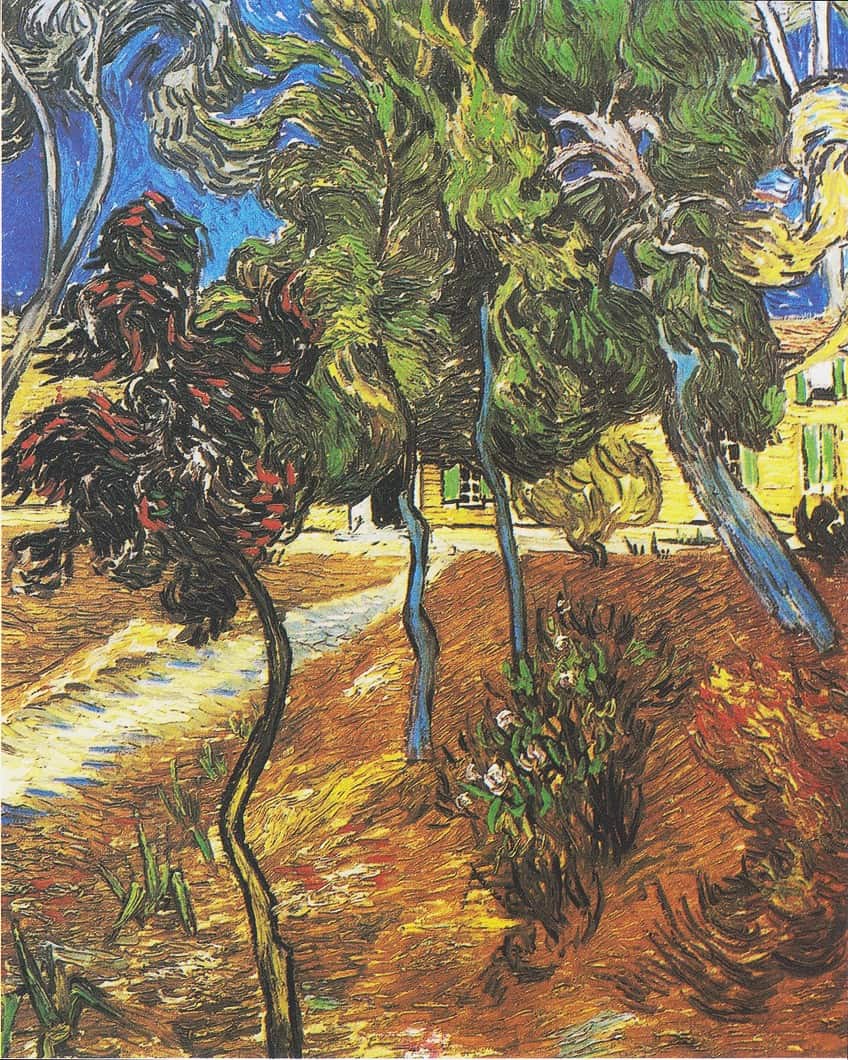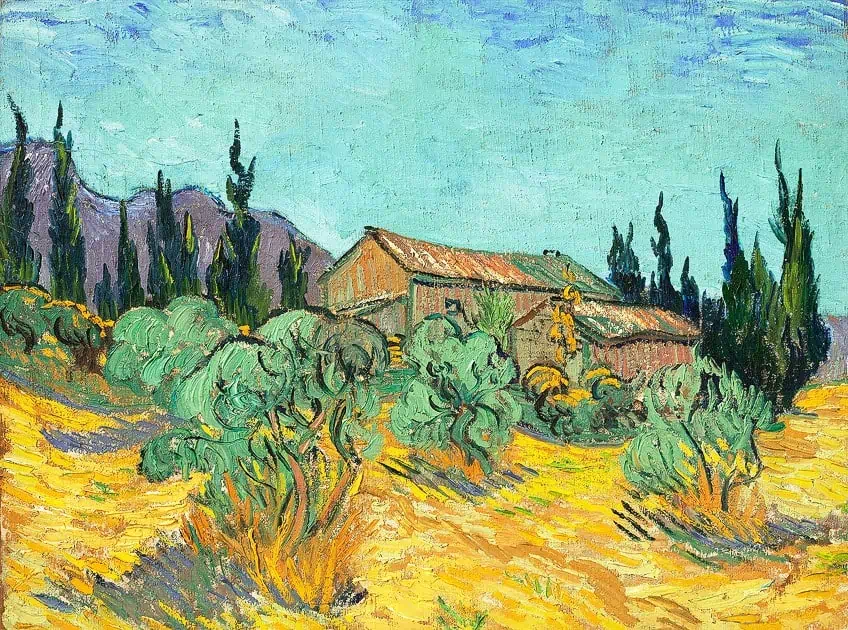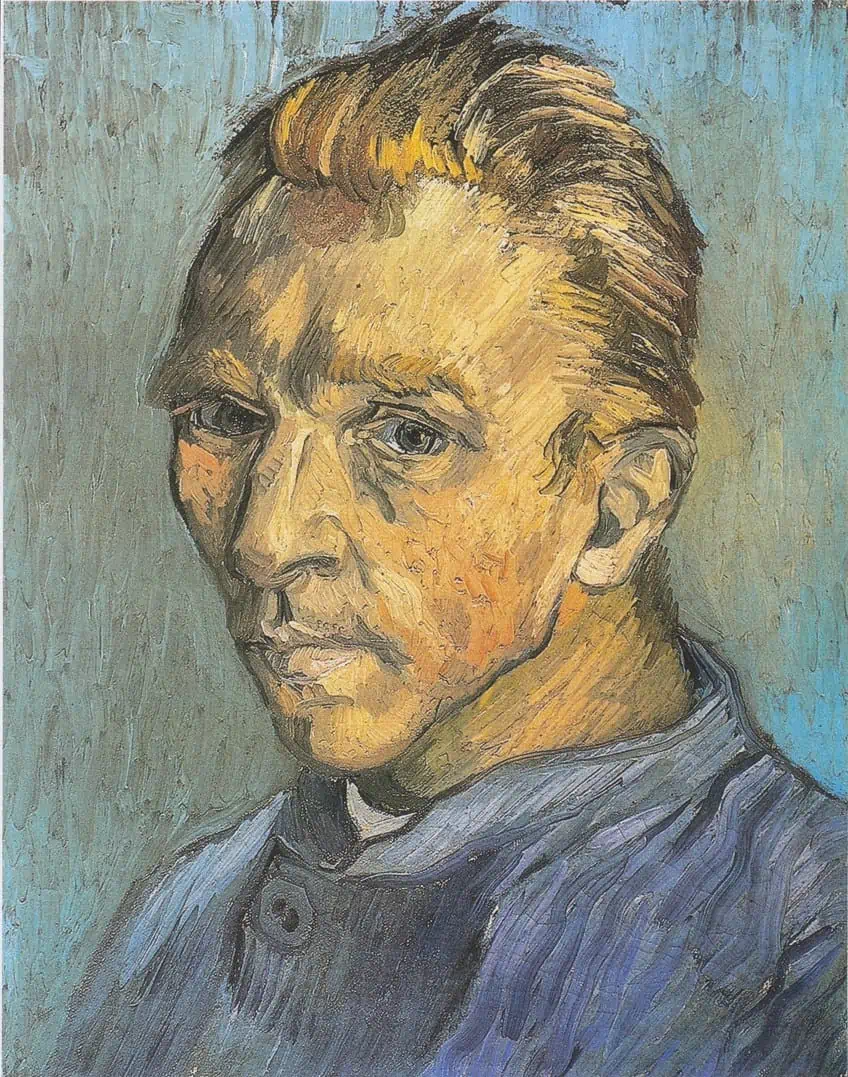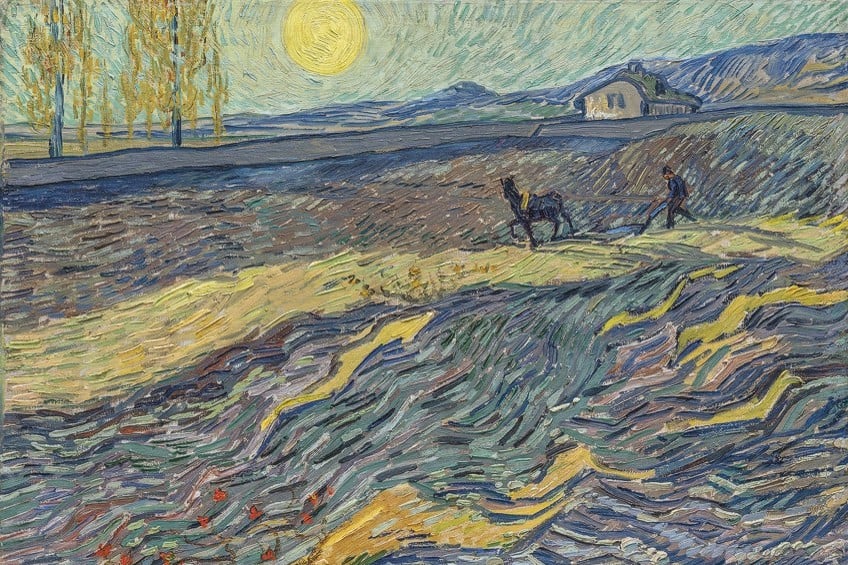Most Expensive Van Gogh Paintings – Van Gogh Paintings Prices
Vincent van Gogh is one of the most highly revered artists to have ever lived, therefore, it is no surprise when one discovers that Van Gogh’s paintings’ prices are extremely high on the art market. For example, Van Gogh’s Sunflowers price was $40 million dollars when it sold in 1987! Rare Van Gogh paintings seldom pop up, and when one does surface it can easily sell on the market for tens of millions of dollars. Today, we will be unveiling the most expensive Van Gogh paintings to ever be sold at auction or to private collectors.
Contents
- 1 The Most Expensive Van Gogh Paintings Ever Sold
- 2 The Top Expensive and Rare Van Gogh Paintings
- 2.1 Trees in the Garden of the Asylum (1889) – $40 Million
- 2.2 Portrait of Madame Ginoux (1890) – $40 Million
- 2.3 Sunflowers (1889) – $40 Million
- 2.4 Young Man with a Cornflower (1890) – $47 Million
- 2.5 Irises (1889) – $54 Million
- 2.6 Landscape under Stormy Sky (1889) – $54 Million
- 2.7 Poppies and Daisies (1890) – $62 Million
- 2.8 The Avenue of Les Alyscamps (1888) – $66 Million
- 2.9 Wooden Cabins among the Olive Trees and Cypresses (1889) – $71 Million
- 2.10 Self-portrait without a Beard (1889) – $72 Million
- 2.11 Laborer in a Field (1889) – $81 Million
- 2.12 Portrait of Dr. Paul Gachet (1890) – $83 Million
- 3 Frequently Asked Questions
The Most Expensive Van Gogh Paintings Ever Sold
Although Vincent van Gogh’s paintings’ prices can be out of the majority of the population’s budget nowadays, this was not always the case, especially in his lifetime. After an unsuccessful proposal in 1873, the Post-impressionist painter noted for his unpredictable behavior as well as his vivid art, experienced his first psychotic break. He traveled to Brussels in the early 1880s to become a painter, however, he was far from the legendary persona we know today.
The Dutch artist struggled not only with mental conditions but also with a shortage of a market for his artworks.

Vincent van Gogh was set to begin the most prolific period of his career when he joined up with another great painter, Paul Gauguin, in 1888. He portrayed the inhabitants of Arles and its alluring surroundings in all their magnificence with vivid dynamic brushwork and stunning bright colors. Flowers, woodlands, farming fields, and, most of all, sunflowers, enabled him to experiment with colors, particularly yellow, which he saw as a sign of emotional honesty.
It was there that he used a new approach to contrast the rich colors in the background with a lone individual in the landscape.
Following the famous severing of his ear after a heated altercation with Gauguin, the Dutch artist landed himself in an institution for nearly a year. In his iconic self-portraits with his bandaged ear, he depicted a series of artworks illustrating his afflictions. In his later years, the painter returned to depicting landscapes with a strong emotional element that conveyed his isolation and frantic longing to restore his sanity.
The Top Expensive and Rare Van Gogh Paintings
Throughout his lifetime, van Gogh only sold a few of his artworks and was compelled to trade several of them for food or medical care. However, his vigorous brushwork, imaginative viewpoints, clashing colors and textures, and his sad but legendary life elevated him to celebrity status among other artists. Van Gogh’s exhibits today pull crowds like magnets, and his masterpieces have become the most expensive treasures worth millions of dollars.
Trees in the Garden of the Asylum (1889) – $40 Million
| Date Completed | 1889 |
| Date Sold | 2019 |
| Medium | Oil painting |
| Van Gogh Painting’s Price | $40 million |
| Auctioneer | Christie’s, New York |
The tops of the trees and the path in the front are highlighted with a pencil in this picture. There are few open places, yet the vista through the trees and the huge open sky create a sense of spaciousness. When a drawing is created in this manner, the composition can easily grow overly thick, but Van Gogh avoided this risk. The compositions are dense, but they are also pure and translucent.
The same is true of a collection of several artworks from this era, created in (extremely diluted) oil paint and using colors discovered in his first canvases at Saint-Remy.

Portrait of Madame Ginoux (1890) – $40 Million
| Date Completed | 1890 |
| Date Sold | 2006 |
| Medium | Oil painting |
| Van Gogh Painting’s Price | $40 million |
| Auctioneer | Christie’s, New York |
Van Gogh paid a visit to the Ginoux family in Arles in January 1890. They were the proprietors of the nightclub with whom he had maintained a connection. Madame Ginoux was not in excellent mental health. Van Gogh had another mental collapse two days later. While recovering, he painted a series of images depicting Madame Ginoux, including this one, based on a painting of her by Gauguin. Van Gogh was searching for “an expression distinct from that of Parisian women” in this piece.
He is most likely alluding to the contrast between the artificial, sickly city life and the unspoiled, wholesome countryside.

Sunflowers (1889) – $40 Million
| Date Completed | 1889 |
| Date Sold | 1987 |
| Medium | Oil painting |
| Van Gogh Painting’s Price | $40 million |
| Auctioneer | Christie’s, London |
It is among several sunflowers still lifes produced by Van Gogh at Arles. This is his own duplicate of the original, which had a yellow backdrop and is currently housed in London’s National Gallery. When it comes to Van Gogh’s Sunflowers’ price, the $40 million paid was three times what any painting had ever brought at auction.
With inflation, the painting would now be worth just over $100 million.

It was also the first time that the historic price was reached for a modern painting rather than one created by an Old Master. Yasuda Insurance, located in Tokyo, was the buyer. The enterprise was eventually acquired by Sompo, and the Van Gogh is currently the main attraction of the Sompo Museum of Art.
Young Man with a Cornflower (1890) – $47 Million
| Date Completed | 1890 |
| Date Sold | 2021 |
| Medium | Oil painting |
| Van Gogh Painting’s Price | $47 million |
| Auctioneer | Christie’s, New York |
In June 1890, the last month of Vincent van Gogh’s life, he created this colorful and unusually expressive portrait of a young Auvers-Sur-Oise resident. This youthful, bedraggled person appears to be a roguish ragamuffin, with a furious wave of sun-bleached, matted hair, rosy cheeks, and glimmering green eyes, possibly belonging to a farming family who cultivated the property around the village, which was established on a peaceful span of the river Oise as it twisted its way north, through the verdant Ile-de-France.
The buyer’s name has not been disclosed, however, there was a significant amount of interest from Far Eastern individuals.

Irises (1889) – $54 Million
| Date Completed | 1889 |
| Date Sold | 1987 |
| Medium | Oil painting |
| Van Gogh Painting’s Price | $54 million |
| Auctioneer | Sotheby’s, New York |
Irises, which was most likely Van Gogh’s first work at the asylum, has had an extremely turbulent recent past. It was auctioned at Sotheby’s in 1987 for $54 million to Australian entrepreneur Alan Bond. However, he ran into financial difficulties and could not pay, thus ownership stayed with the auction company.
Sotheby’s then resold the artwork to the J. Paul Getty Museum in 1990. Although the museum’s purchase price was never announced, it was most likely close to the auction price.

It is currently considered one of the centerpieces of the Getty’s collection. The cropped composition, split into large sections of vibrant color with massive irises spilling over its edges, was most likely influenced by the ornamental patterns of Japanese woodblock prints.
There aren’t any known sketches for this artwork, which the artist considered a study.
Landscape under Stormy Sky (1889) – $54 Million
| Date Completed | 1889 |
| Date Sold | 2015 |
| Medium | Oil painting |
| Van Gogh Painting’s Price | $54 million |
| Auctioneer | Sotheby’s, New York |
This atmospheric painting is one of the artist’s greatest Arles landscapes. The composition represents a lush field in danger of an intense deluge and was created during the artist’s most productive phase when his paintings were filled with rich expanses of densely-painted color.
Van Gogh crafts an intensely stressful picture here, loaded with psychological tension as the laborers rush to finish their tasks before the clouds open up and the rains fall down on them.

This artwork was finished barely two months before Van Gogh painted what is undoubtedly his most renowned work, The Starry Night (1889). It might be regarded as the thunderous forerunner to the iconic painting and the first act of Van Gogh’s epic cosmic adventure.
Poppies and Daisies (1890) – $62 Million
| Date Completed | 1890 |
| Date Sold | 2014 |
| Medium | Oil painting |
| Van Gogh Painting’s Price | $62 million |
| Auctioneer | Sotheby’s, New York |
Van Gogh had begun working on several flower canvases just before departing Saint-Remy. Throughout his brief career, Van Gogh returned to still life and floral subjects regularly. He painted several images of flowers in vases in June, including this one. During this little moment of relative quiet and contentment, he had poured himself into his job as was his tendency.
He had also hoped to resume sketching while at Auvers, and his enthusiasm for drawing can be seen in this piece.

He had written to Theo with great excitement about his new acquaintance Dr. Gachet, describing how the doctor’s home was full of artwork and “full of helpful items to place flowers in or to assemble still lives”,’ implying that he created these works at his home.
The Avenue of Les Alyscamps (1888) – $66 Million
| Date Completed | 1888 |
| Date Sold | 2015 |
| Medium | Oil painting |
| Van Gogh Painting’s Price | $66 million |
| Auctioneer | Sotheby’s, New York |
Vincent van Gogh and Paul Gauguin explored Les Alyscamps, an old Roman necropolis established by the Romans beyond the city walls. The grounds were gradually taken up by factory buildings and the railroad, leaving only the avenue of graves, and a path of shaded poplar trees leading to a Romanesque church.
This alley was renowned as a lovers’ lane across France.

The lovers represented in the artwork are out for a romantic walk in the evening, and this part of the situation piqued the painters’ interest. The two painters produced several identical scenes to contrast their works and picked the Alyscamps location to create and compare.
They created a number of works, including this particular one.
Wooden Cabins among the Olive Trees and Cypresses (1889) – $71 Million
| Date Completed | 1889 |
| Date Sold | 2021 |
| Medium | Oil painting |
| Van Gogh Painting’s Price | $71 million |
| Auctioneer | Christie’s, New York |
After returning to painting after a catastrophic breakdown in the middle of July, that fall saw an unprecedented rush of creativity as Van Gogh worked with intense zeal, creating a near-miraculous deluge of work as he depicted the Provençal countryside surrounding him with an ever-greater fervor.
This artwork, created in October 1889, is part of the creative revival. The sunbaked countryside of southern France is brought vividly to life here.

Under a beautiful turquoise-blue sky, an olive grove can be observed, its silver evergreen leaf throwing violet shades that calm the fiery, flame-like brushstrokes that seem to lick at its twisted branches. The ground looks like an ocean of gold; dense with impasto, lines appear to be rippling in the water, emphasizing the sensation of movement and rhythm that pervades every aspect of this work.
Self-portrait without a Beard (1889) – $72 Million
| Date Completed | 1889 |
| Date Sold | 1998 |
| Medium | Oil painting |
| Van Gogh Painting’s Price | $72 million |
| Auctioneer | Christie’s New York |
Vincent van Gogh created a minimum of 35 self-portraits over his lifetime. This painting, though, stands out since it is the only one that depicts the painter with a smooth face. Even though it is not as easily identifiable to the general public as some of his other works, this distinguishing feature has made it a favorite among art experts and historians.
It was created during a period in Van Gogh’s life when he was experiencing personal troubles as a result of a stormy altercation with fellow painter and longtime friend Paul Gauguin.

Despite his poverty, Van Gogh had always strived to assist Gauguin financially. As a result, the two moved in together to split expenses. Unfortunately, living in such close quarters caused difficulties between the erstwhile friends, and the loss of their connection upset Van Gogh, who was already an emotionally vulnerable individual.
The haunting look in his eyes expresses the misery he was experiencing.
Laborer in a Field (1889) – $81 Million
| Date Completed | 1889 |
| Date Sold | 2017 |
| Medium | Oil painting |
| Van Gogh Painting’s Price | $81 million |
| Auctioneer | Christie’s New York |
Van Gogh spent the year before his death at the institution of Saint-Paul-de-Mausole. Laborer in a Field depicts an artist who is committed to mending himself via his work. Most mornings between May 1889 and May 1890, Vincent van Gogh saw the outside world as it appears in this painting: a short stone wall surrounding a field of wheat, and an old farmhouse. Under one of the artist’s vibrant suns, a plowman can be seen working.
This landscape, like several other Van Goghs that appear on the market, was purchased by an unknown buyer.

Van Gogh started this artwork in the last days of August 1889 and finished it on the 2nd of September. Speaking to his brother, he once wrote: “I began work again a little yesterday – a plain of yellow wheat being plowed, the contrast of the purple plowed dirt with the streaks of yellow wheat, hills in the backdrop. Painting distracts me far more than anything else, and if it were possible to just throw myself back into it with all my passion, it could be the greatest remedy”.
Portrait of Dr. Paul Gachet (1890) – $83 Million
| Date Completed | 1890 |
| Date Sold | 15 May 1990 |
| Medium | Oil painting |
| Van Gogh Painting’s Price | $83 million |
| Auctioneer | Christie’s, New York |
Dr. Gachet was a prominent figure in Van Gogh’s life, looking after him after he tried to commit suicide at Auvers-Sur-Oise, thus the sitter provides a great deal of significance to the artwork. It was sold to a buyer from Tokyo in 1990, at a period when Japanese collectors were fiercely contending for the works of the famous artists of Impressionism and Post-Impressionism.
It was purchased by businessman Ryoei Saito, who subsequently said that he wanted the artwork incinerated along with his body.

Thankfully, after he died in 1996, the artwork was sold to an Austrian investment manager, Wolfgang Flöttl. After Flöttl ran into financial difficulties, the painting was sold again and is currently held in a collection by a very private European millionaire.
That wraps up our list of the most expensive Van Gogh paintings ever sold! These rare paintings might not be the famous titles that you have heard of before, yet these are the works that sold for the highest prices to both private collectors and at auction. What makes most of these artworks particularly noteworthy is that they were produced in the last few years of his life.
Take a look at our expensive Van Gogh Paintings webstory here!
Frequently Asked Questions
What Are the Most Expensive Van Gogh Paintings Ever Sold?
The Portrait of Dr. Paul Gachet (1890) is the Van Gogh painting that sold for the highest price out of the artist’s entire collection of works. It sold for a record-breaking $83 million in 1990. Laborer in a Field (1889) sold for $81 million and is his second-highest seller.
What Was Van Gogh’s Sunflowers’ Price When It Was Sold?
The famous painting sold for $40 million at auction in 1987. That would be the equivalent of $100 million today. Since then, two other artworks of Van Gogh have sold for the same amount – the Portrait of Madame Ginoux (1890) and Trees in the Garden of the Asylum (1889). Both of the artworks were sold through the same auction house: Christie’s in New York. The first was sold in 2006, and the second in 2019.
Jordan Anthony is a Cape Town-based film photographer, curator, and arts writer. She holds a Bachelor of Art in Fine Arts from the University of the Witwatersrand, Johannesburg, where she explored themes like healing, identity, dreams, and intuitive creation in her Contemporary art practice. Jordan has collaborated with various local art institutions, including the KZNSA Gallery in Durban, the Turbine Art Fair, and the Wits Art Museum. Her photography focuses on abstract color manipulations, portraiture, candid shots, and urban landscapes. She’s intrigued by philosophy, memory, and esotericism, drawing inspiration from Surrealism, Fluxus, and ancient civilizations, as well as childhood influences and found objects. Jordan is working for artfilemagazine since 2022 and writes blog posts about art history and photography.
Learn more about Jordan Anthony and about us.
Cite this Article
Jordan, Anthony, “Most Expensive Van Gogh Paintings – Van Gogh Paintings Prices.” artfilemagazine – Your Online Art Source. November 21, 2022. URL: https://artfilemagazine.com/most-expensive-van-gogh-paintings/
Anthony, J. (2022, 21 November). Most Expensive Van Gogh Paintings – Van Gogh Paintings Prices. artfilemagazine – Your Online Art Source. https://artfilemagazine.com/most-expensive-van-gogh-paintings/
Anthony, Jordan. “Most Expensive Van Gogh Paintings – Van Gogh Paintings Prices.” artfilemagazine – Your Online Art Source, November 21, 2022. https://artfilemagazine.com/most-expensive-van-gogh-paintings/.



